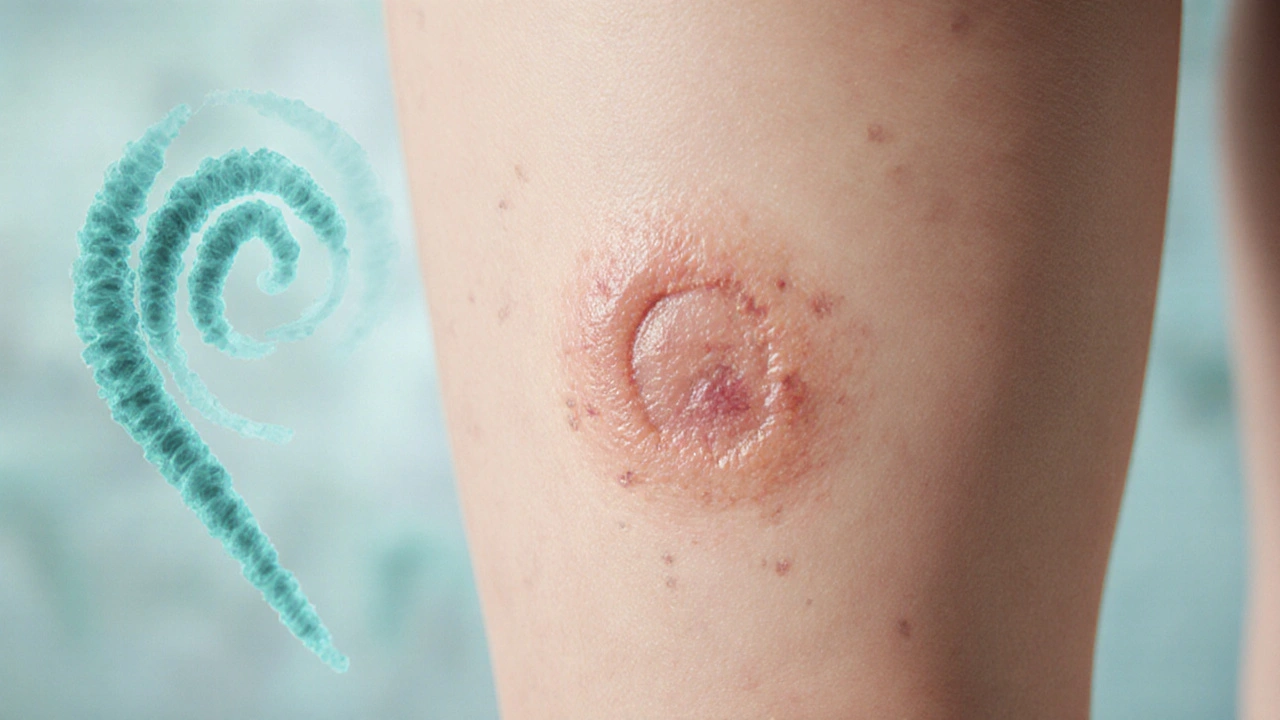Primary Syphilis Symptoms: What to Watch For and When to Act
When primary syphilis, the first stage of a bacterial infection caused by Treponema pallidum. Also known as stage one syphilis, it often starts with a single sore that doesn’t hurt and can be easy to miss. This sore, called a chancre, a firm, round, painless ulcer that appears at the site of infection, usually shows up 10 to 90 days after exposure—often on the genitals, anus, rectum, or mouth. Because it doesn’t itch or burn, many people don’t realize it’s a sign of something serious. That’s why primary syphilis symptoms are so dangerous: they fade on their own, making you think you’re fine when the infection is still spreading inside you.
The chancre, a firm, round, painless ulcer that appears at the site of infection is the hallmark, but it’s not the only clue. Swollen lymph nodes near the sore—like in the groin if the chancre is on the penis—are common too. You might not feel sick, but the bacteria are already moving through your bloodstream. This is why testing is critical, even if you feel fine. If you’ve had unprotected sex, shared needles, or had a partner with an STI, getting checked isn’t just smart—it’s necessary. Left untreated, primary syphilis turns into secondary syphilis, which brings rashes, fever, and even hair loss. By then, it’s harder to treat and can lead to long-term damage to your heart, brain, and nerves.
Who’s most at risk? Anyone who’s sexually active without consistent protection. Men who have sex with men, people with multiple partners, and those with other STIs are statistically more likely to contract syphilis, but it doesn’t discriminate. It’s on the rise again in many countries, including the U.S. and parts of Europe. The good news? It’s curable with a single penicillin shot if caught early. The bad news? Many people wait too long because the first sign looks like a pimple, a cut, or a bug bite. If you notice a strange sore that won’t heal, don’t ignore it. Don’t assume it’s harmless. Go to a clinic, get tested, and get treated. The sooner you act, the less you risk.
Below, you’ll find real-world guides and comparisons from trusted sources that help you understand what to look for, how to get tested safely, and what treatments actually work. These aren’t theory pieces—they’re practical, up-to-date resources based on real cases and clinical advice. Whether you’re worried about a sore, trying to understand a diagnosis, or just want to protect yourself better, the articles here give you the facts without the fluff.
- Archer Pennington
- 17
Syphilis Stages Explained: From Primary to Tertiary
Learn the four stages of syphilis, their symptoms, diagnosis methods, and treatment options. Get clear guidance on prevention, early detection, and when to seek medical care.
Read more
